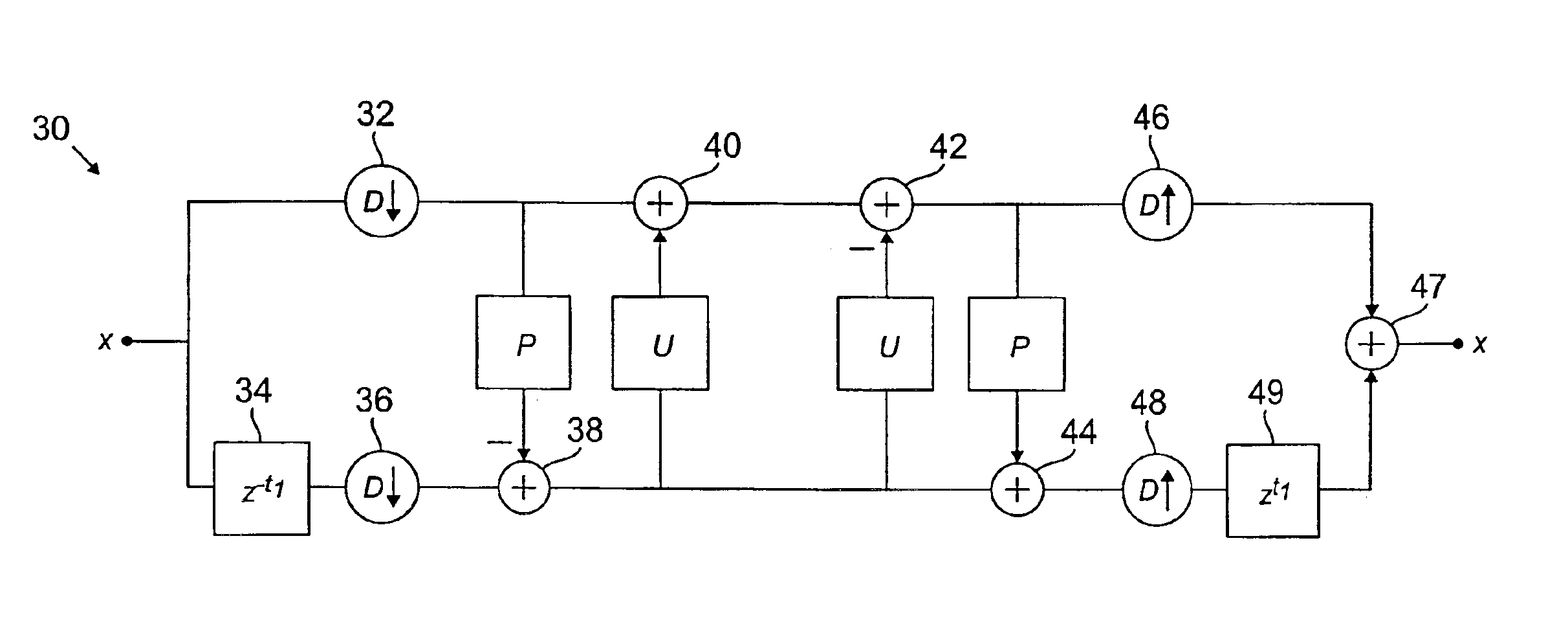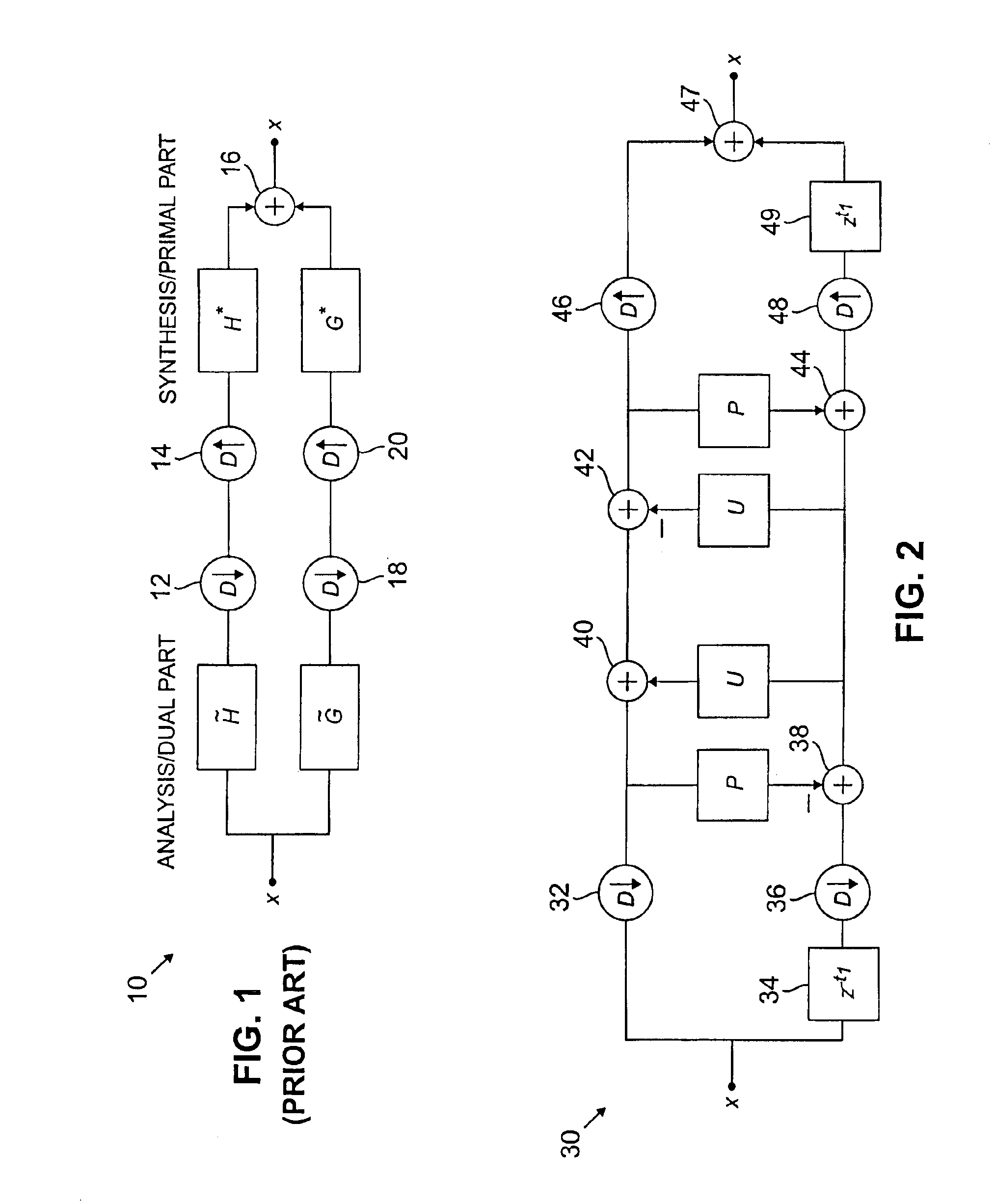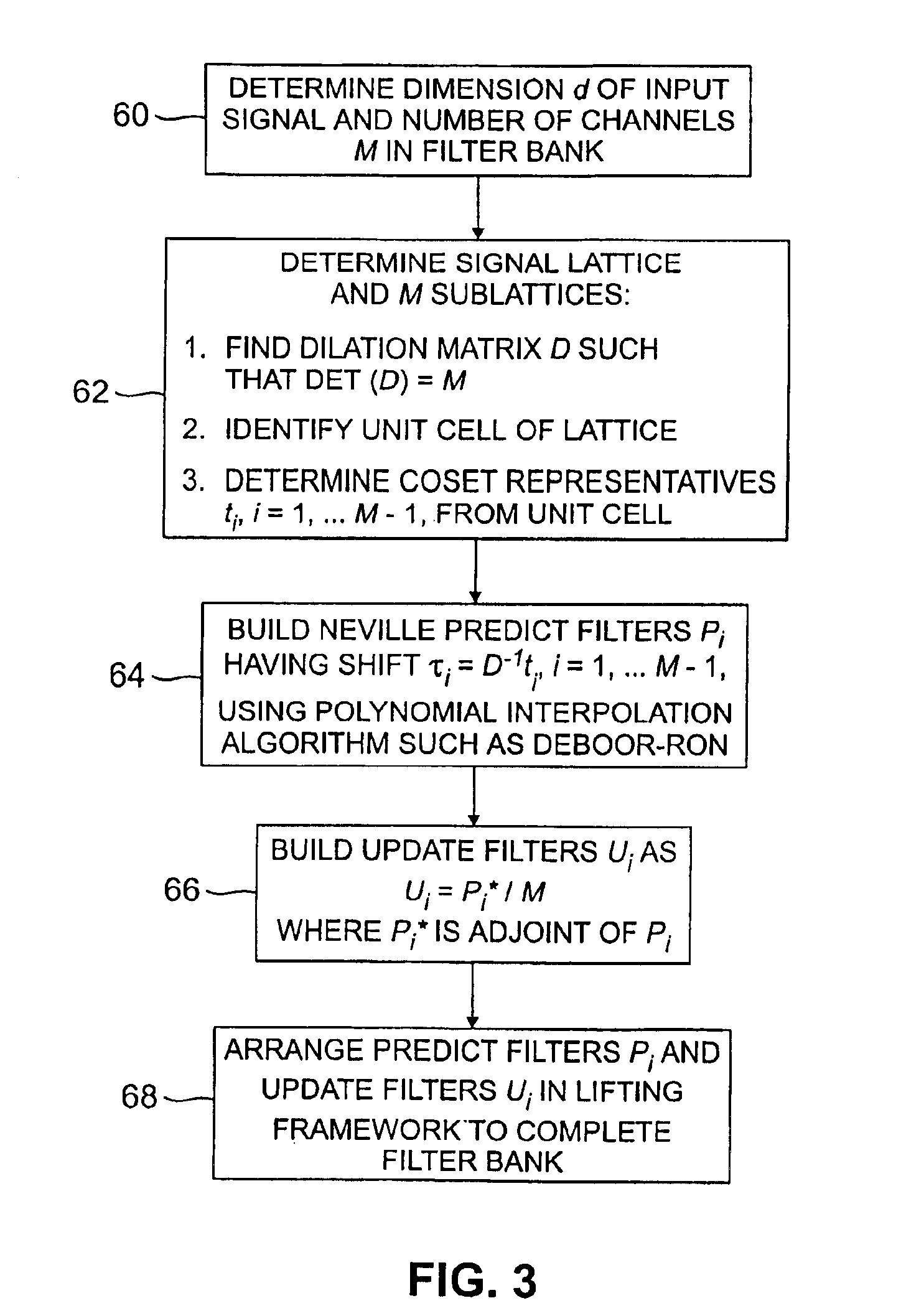Interpolating filter banks in arbitrary dimensions
- Summary
- Abstract
- Description
- Claims
- Application Information
AI Technical Summary
Benefits of technology
Problems solved by technology
Method used
Image
Examples
Embodiment Construction
The present invention will be illustrated below in conjunction with exemplary filter banks and signal lattices. It should be understood, however, that the disclosed techniques are suitable for use with a wide variety of other types of signals and in numerous diverse signal processing applications. The term “filter bank” as used herein refers generally to a device for processing a set of samples of a signal. A “lattice” is a representation of signal sample points in one or more dimensions. A “sublattice” is a subset of the sample points of a lattice, and is generally shown in the sampled domain, that is, without other signal sample points which are removed as a result of a downsampling operation. The sublattice typically represents a rotated portion of its corresponding signal lattice. A sublattice is used to identify a particular “neighborhood,” where a neighborhood refers generally to a local subset of sample points in the corresponding sublattice, which is located around a point t...
PUM
 Login to View More
Login to View More Abstract
Description
Claims
Application Information
 Login to View More
Login to View More - R&D
- Intellectual Property
- Life Sciences
- Materials
- Tech Scout
- Unparalleled Data Quality
- Higher Quality Content
- 60% Fewer Hallucinations
Browse by: Latest US Patents, China's latest patents, Technical Efficacy Thesaurus, Application Domain, Technology Topic, Popular Technical Reports.
© 2025 PatSnap. All rights reserved.Legal|Privacy policy|Modern Slavery Act Transparency Statement|Sitemap|About US| Contact US: help@patsnap.com



